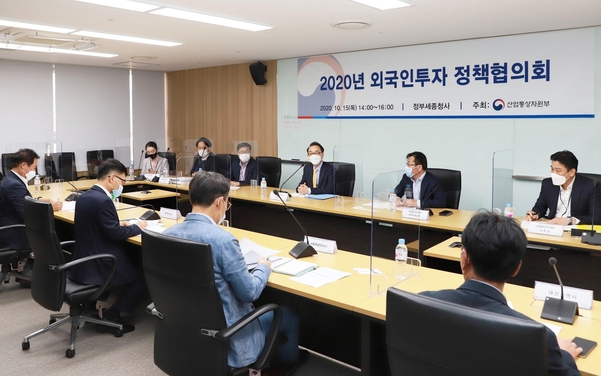Input 2021.01.12 11:20
Investment from China surged by 102.8%, investment from the US decreased by 22.5%
Last year, foreign direct investment (FDI) in Korea fell 11.1% year-on-year. FDI turned to a decline after six years in 2019 and continued a double-digit decline for the second consecutive year.
According to the ‘202 Foreign Direct Investment Trends’ announced by the Ministry of Trade, Industry and Energy on the 12th, foreign direct investment amounted to $2.75 billion (reported) last year, about $2.58 billion (11.1 billion dollars) from $23.33 billion in 2019. %) decreased.
Based on the actual investment made, FDI was only $11.90 billion, down 17% from the previous year ($13.3 billion).

Last year, FDI saw an increase in investment in new industries related to the fourth industrial revolution, such as artificial intelligence (AI), big data, cloud, eco-friendly cars, and bio. The investment in these sectors was $8.42 billion, an increase of 9.3% from the previous year. The share of total investment (40.6%) also increased by 7.6 percentage points (p). Manufacturing industries such as secondary batteries and pharmaceuticals ($2.81 billion) and service industries such as e-commerce and R&D ($5.61 billion) also saw an increase of 10.7% and 8.6%, respectively, compared to a year ago. Investments in new and renewable energy such as wind power and solar power and green industry-related fields such as water treatment and resource recycling were $480 million as reported, an increase of 101.4% from the previous year.
Investment in high-tech materials, parts, and equipment (miniature managers), such as semiconductors, secondary batteries, and eco-friendly car parts, declined 7.0% to $3.81 billion as reported. However, the share of the total investment increased by 1.2 percentage points to 18.4%. Investment in the general manager sector dropped a whopping 43.7% in the first half, but increased 30.9% in the second half, reducing the annual decline.
By investment country, investment in China, Hong Kong, Singapore, Taiwan, Malaysia, and other Chinese countries, as reported, reached $5.46 billion, an increase of 26.5% from the previous year. Of these, China’s reported investment rose 102.8% to 1.89 billion dollars. On the other hand, the US ($5.3 billion), the European Union (EU, $4.72 billion), and Japan ($730 million) fell 22.5%, 33.8%, and 49.1%, respectively.
An official from the Ministry of Industry said, “The global FDI declined significantly due to the global economic crisis caused by Corona 19, and the decline in Korea was relatively good.” “Since 2015, it has attracted foreign direct investment of 20 billion dollars for 6 consecutive years and is a safe investment destination I confirmed that it was,” he evaluated.
The United Nations Council on Trade and Development (UNCTAD) predicted that global FDI will decline to 5-10% in 2021. FDI is not expected to attract FDI this year due to the negative factors of FDI, such as the situation where the uncertainty of Corona 19 continues, the competition for technological supremacy between the US and China intensifies, and the tendency to secure domestic-centered supply chains.
In this regard, an official from the Ministry of Industry said, “The government will make efforts to attract investment from high-tech companies by proactively discovering companies with high potential for future growth and providing customized incentives for the transition to FDI Plus.”
